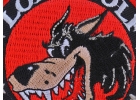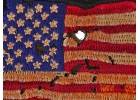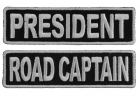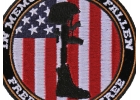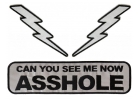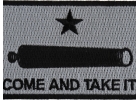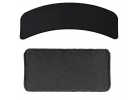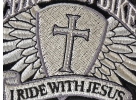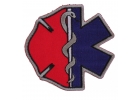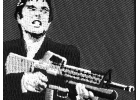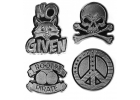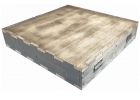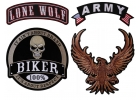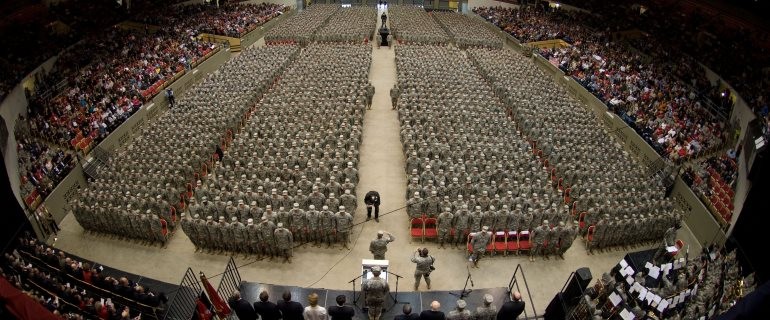
Army Brigade
Brigades have been used by militaries since the 17th century. The word "brigade" was borrowed by the English from the French and is loosely interpreted as "those who fight." Hence, as the largest combat organization in the United States Army, the title of Brigade is entirely appropriate. More to the point, what exactly is a brigade? As technologies that define how wars are fought continue to evolve, so too is the organization of any army. What constituted a brigade twenty years ago no longer applies, and what one is today is also changing with each major engagement.
In the last decade of the 20th century, a brigade was comprised of three regiments, and a headquarters with a ranking commanding officer of brigadier general. Approximately 4,500 troops were assigned to each brigade. The brigade was one of three assigned to a commanding division. Brigades themselves were comprised of varying types of support units from artillery, armored, to air.
As of 2003, the new Stryker Brigade was introduced with a reinterpreted command structure and a loss of focus on the use of divisions, in favor of the Brigade Combat Team (BCT). Improved communications in the digital era allow for smaller command structures needed to support the BCT in the actual combat arena. Strykers are 8-wheeled armored vehicles capable of troop transport, portable communications center, light armored attack, and quick deployment worldwide. Instead of a strict organizational system, support units are added and subtracted from the BCT to allow for a more fluid application of force where and when needed.
All in all, the brigades consisting of musketeers and cavalry that won America's independence in the 18th century, simply no longer exist as such in the modern era, except that their mission remains virtually the same. The brigade is still the largest organizational segment of the army that is deployed to fight, reflecting the word that helped conceive them hundreds of years ago.
Army Brigades Moments in History
The first use of combined forces harkens back to George Washington crossing the Delaware River in December 1776. Washington directed the artillery commanded by Henry Knox to be distributed throughout the six brigades with which he was attacking the Hessians. This meant an unattached unit was providing direct support to the soldiers, a flexible move the mercenary army was simply not prepared to withstand. The Hessians, meanwhile, focused all their artillery fire on a single segment of the attacking two divisions. This left five of the six Revolutionary Army brigades free to continue to surge forward, surround the Hessians, take Trenton, and ultimately accept the surrender of the hired army.
Fast forward a couple hundred years to 1945 and the Battle of Remagen in Germany.During World War II, the use of armored tanks had continued to change how they supported infantry and likewise. Not necessarily called a brigade, but comprised in a similar manner to how the army would become structured later in the 20th century, the US Army created Combat Command units A and B, which were comprised of three infantry divisions and an armored division; once again, melding the attack capabilities of different technologies.
Combat Command B was given the order to advance to the Rhine River quickly and trap as many German units on the west side of the river as possible. The 9th Armored Division rapidly pushed the German forces back to the town of Remagen, where a railway bridge across the Rhine remained intact. Combat Command B had accomplished their initial command. However, the Germans attempted to demolish the bridge, as they had been doing during their retreat across their crumbling nation. The US forces received prior notification of the demolition and put into play an effort to take the bridge and provide a secure crossing for the remainder of the Army arriving behind them.
The tanks and infantry teamed up to take out the demolitions team and command structure of the German units, resulting in the Bridge at Remagen to stay standing and useful to the Allied troops until pontoon bridges could be constructed. The fleeing German commander Major Scheller was executed by court martial for the loss of the bridge.
The creative use of infantry troops and an armored division under a single command at Remagen set the stage for the Brigade command structure through the remainder of the 20th century.
While some adjustments were made in the Viet Nam war for combining different units within a Brigade, the final stage of change came during the 1991 Desert Storm campaign. It took American troops nearly six months to deploy and confront the Iraqi army, a cumbersome and ineffective timeline in a modern combat arena. It is at this time, the research and testing started to implement the latest Stryker Brigades that are in use today.

